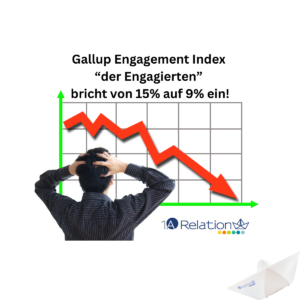The US online furniture retailer Wayfair has ceased its business activities in Germany with immediate effect after 15 years. Around 730 employees are affected by this decision, which corresponds to about 3% of the company’s global workforce. Why is this a good example of unstrategic CRM or eCommerce?
What are the reasons for the withdrawal?
- Weak macroeconomic conditions:
- The German home furnishings and furniture market has faced economic challenges in recent years that have affected Wayfair’s growth.
- Low brand awareness:
- Unlike in markets such as the UK, Wayfair has not been able to establish a strong brand presence in Germany, resulting in limited customer trust and loyalty.
- Excessive focus on market share
- The reach without a target group focus was too expensive and not properly controlled.
- Limited scalability:
- Despite significant investments, Wayfair was unable to achieve the necessary market size in Germany to remain competitive.
Financial “side effects”:
The withdrawal is expected to result in restructuring costs of between $102 million and $111 million, including severance and closure costs.
What does this mean for the future direction?
Wayfair plans to invest the resources saved in core markets such as Canada, the UK and Ireland, where the company already has a strong market position. Another focus is on expanding the brick-and-mortar retail business in the US.
To sum up, what are the lessons learned from “unstrategic CRM or eCommerce”?
Wayfair’s withdrawal from Germany underscores the importance of thorough market analysis and adaptation to local conditions. Companies should be careful to allocate their resources efficiently and regularly review their strategies in order to be able to respond to market changes.
Markus Wübben summarized the importance for CRM very well in his LinkedIn post. I will add a few more recommendations:
Markus: Growth is pointless if it costs more to acquire a customer than they are worth.
My recommendation:
Build our CRM cockpit and, for example, measure the key figures for acquisition for
a) cost per customer by origin and
b) the profitability of the same customer after 6, 12, 18 and 24 months.
This includes, especially at the beginning of the customer relationship, a forecast for the next few months in order to avoid unnecessary investments at an early stage.
It’s not worth it to chase market share without measuring the important eCommerce metrics (KPI). It’s like flying blind.
Markus: Retaining a good customer is much more profitable than acquiring new ones.
My recommendation:
develop customer retention measures that also have acquisition potential.
This attracts customers who are highly likely to also be of high value and thus quickly recoup the acquisition costs.
Markus: Success in one region is no guarantee of global success – adapt your strategies.
My recommendation – address a taboo subject.
Because in the field of CRM, it is often a taboo subject: category management.
Procurement doesn’t like it when CRM develops ideas on how to buy better.
But my recommendation is very clear: CRM can analyze customer groups in such a way that 20% of previously purchased products are no longer purchased, or at least warehousing costs are significantly reduced.
Recommendation for companies in 2025 – antidote to unstrategic CRM and e-commerce
Customer value analysis as priority 1: Implementing value-based customer relationship management (CRM) makes it possible to identify and target profitable customer segments, thus ensuring long-term profitability. This should include both value-based and contribution-based components. It should also include components that analyze buying behavior and are used for operational campaigns.
Market adaptation: To ensure relevance and customer loyalty, it is important to adapt products and services to the specific needs and preferences of the respective market. Keyword “Category Management
Diversified growth strategies: Instead of relying exclusively on expansion, companies should also invest in existing markets to consolidate their position and promote sustainable growth. (which is ultimately nothing more than the last point)
Customer retention and loyalty: If you want to avoid one-time and bargain buyers, you need an attractive customer retention program that differentiates according to customer value and customer behavior. This is where the circle closes on the aspects mentioned above.
More articles on the topic of eCommerce
Is the business model (e.g. Wayfair) suitable for customer retention? A supplementary comment:
For the product range of Wayfair (and some similar providers), it is not so easy to achieve customer loyalty in principle, because repeat purchases are not so clearly foreseeable.
It is different with cosmetics, for example. Every X weeks I need a new cream or perfume. But a new chair, an accessory, there is hardly any “consumption”.
So “consumer goods” – above a certain value – are much better suited to customer retention.
And that is precisely the core problem:
Because that is why the pressure on new customers was so extremely high. And in my opinion, that is also the reason for the failure – in a market in Germany as it is now.
At a glance:
The order of the day is to present the costs per new customer and follow-up behavior in a customer value analysis.
After a customer value analysis, 10% to 20% of customers can be “expelled” “quickly”. This creates space for the really important customers.












